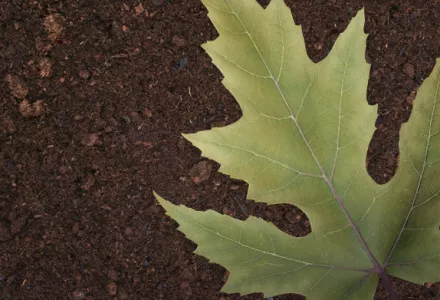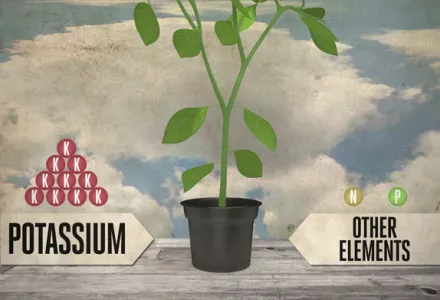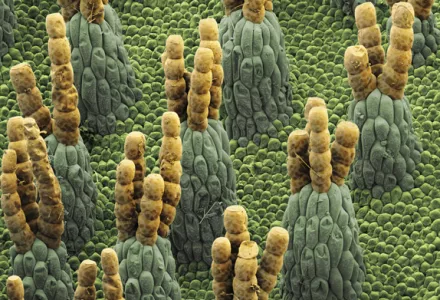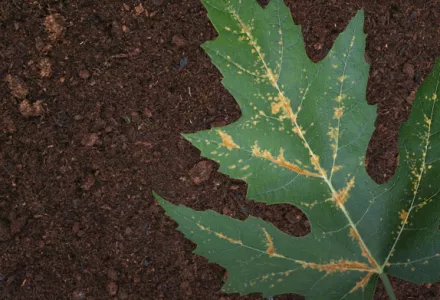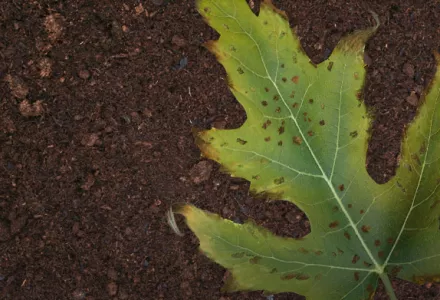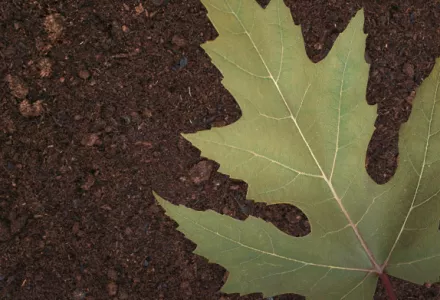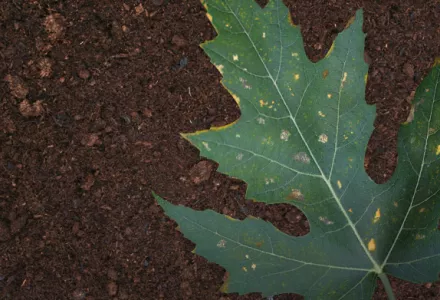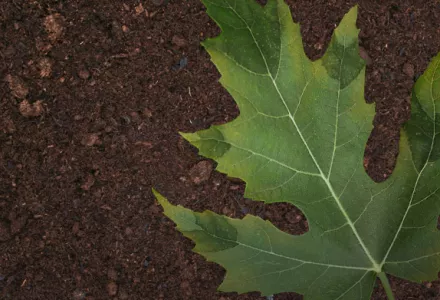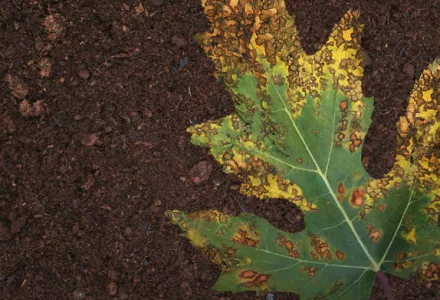Iron is a vital element for plant and animal life. Iron has a number of important functions in the overall metabolism of the plant and is essential for the synthesis of chlorophyll. Iron is a relatively abundant element in the universe. It is found in the sun and in many types of stars in considerable quantity. By weight, the metal is the fourth most abundant element in the earth’s crust.
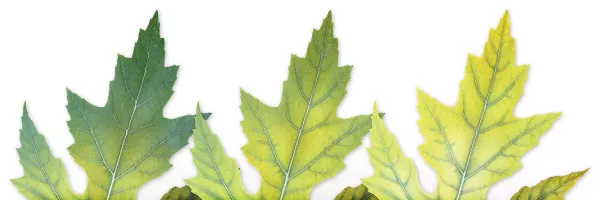
The brown and red color of soil is caused by iron. The use of iron predates recorded history, and still today, iron is the cheapest, most abundant, and important one of all metals. The pure metal is not often encountered commercially, because it is very chemically reactive and it corrodes rapidly, especially in moist air or at elevated temperatures. In general, iron is poorly absorbed by a plant. It can only be taken up sufficiently by the roots in certain forms and under proper conditions. Soil seldom contains too little iron, but it is possible that forms of iron that can be absorbed by the plant are lacking. The absorbency of iron is strongly dependent on the pH. Ordinarily, there is sufficient iron present in absorbable form in acidic soils.
Iron deficiency
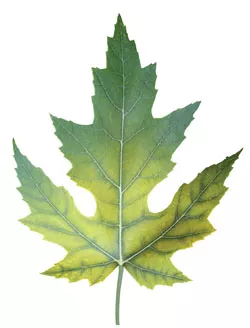
Fast growing plants in general are pretty efficient with the absorption of iron1, and under normal conditions, it has little trouble with iron deficien- cies. Except during periods of heavy growth, or high plant stress, iron deficiency symptoms can temporarily appear that eventually go away by themselves. These symptoms are not detrimental to the harvest. An iron deficiency is character- ized by a strong yellowing of the young leaves and the growth shoots between the veins. This oc- curs mainly because iron is not mobile in the plant. The young leaves can’t draw any iron from the older leaves. With a serious iron shortage, the older leaves and the smaller veins in the leaf can also turn yellow.
Development of a shortage
- Green/yellow chlorosis, from inside to the outside in the younger leaves and in the growth shoots. The veins remain mostly green.
- Continued yellowing of the leaves to sometimes almost white. Also, large leaves turn yellow. This inhibits growth.
- In serious cases the leaves show necrosis, and the plant’s growth and flowering are inhibited.
Reasons for a shortage
- The pH in the root environment is too high (pH> 6,5).
- The root environment contains a lot of zinc and/or manganese
- The concentration of iron is too low in the root environment.
- The root temperature is low.
- The root medium is too wet, causing the oxygen supply in the roots to stagnate.
- The root system functions inefficiently due to damaged, infected or dead roots.
- There is too much light on the nutrition tank; light promotes the growth of algae. Algae also use up the iron and break down iron chelates.
Chelates
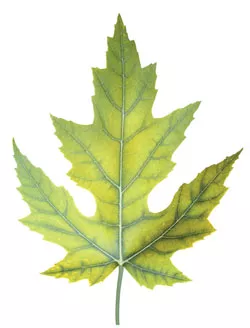
A chelate is an organic molecule which forms a bond with free electrically charged “metal particles” (ions). Chelates owe their name to the fact that they are attached like a claw around the metal ion (chelate is the Greek word for claw). Thanks to this property, they keep the metal ion dissolvable in water, and moreover, the metal ion will react less quickly with surround- ing materials. Additionally, chelates insure that a metal ion, for example iron, is taken into the roots in a stable, soluble form.
For the most part, most chelates themselves can be easily absorbed via the roots as well as the leaves. Chelates, like humic acid and citric acid, appear naturally in the ground and in organic materials. Roots and bacteria also secrete natural chelates (exudates) in order to promote the uptake of iron. Chelates used in professional agriculture and gardening are factory made. The most-used chelates are DTPA, EDDHA and EDTA. Each one is active in a different pH area:
- DTPA iron chelate works especially with a pH lower than 6.5, and is used primarily for growing on substrate.
- EDDHA iron chelate works in a broader pH range than DTPA, and is even effective to a pH of 8
- EDDHA chelate is more expensive and disintegrates faster at low pH values. EDDHA iron chelate is meant for application with rather high pH’s, thus for iron deficiencies in lime rich soils
- For leaf fertilization, another kind of iron chelate is often used, namely the EDTA chelate, because it doesn’t cause leaf burn very quickly. Iron chelates decompose quickly in ultraviolet light and daylight. By exposure to this light, the iron chelate concentration can be diminished by half in a few days. There- fore, protect nutrient solutions and fertilizer packages from light.
Solutions to resolve a shortage
- Minor iron deficiency symptoms are rather easily reversible. Depending on the origin, a shortage can be corrected by various means. The pH can be lowered, excessive manganese or zinc fertilization can be avoided, iron chelates can be added to the substrate, drainage can be improved, or the ground temperature can be increased. A leaf nutrient with iron chelates could possibly be applied. If a good fertilizer is used with hydroponic growing, an iron deficiency is almost out of the question.
- Go to your shop for expert advice. They have the right products available. A correctly formulated fertilizer contains sufficient iron in a form that the plant can absorb
- If a shortage becomes visible, the addition of iron chelates to the soil is less effective, and works slower than fertilizing the leaves. In order to get 1 kg of iron into the roots, 5 to 10 times as much iron chelates need to be applied. The iron chelates must be thoroughly mixed into the ground. This is because the daylight breaks down the chelates, and iron chelates are only effective around the roots.
- The best thing you can do is spray the plants with a watery solution of EDDHA - (max. 0.1 grams per litre) or EDTA chelates (max. 0.5 grams per litre)

